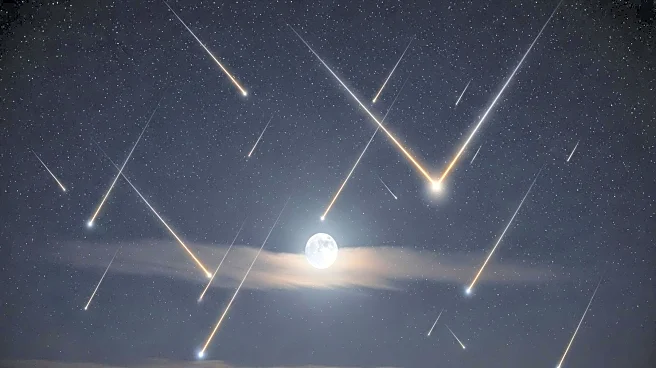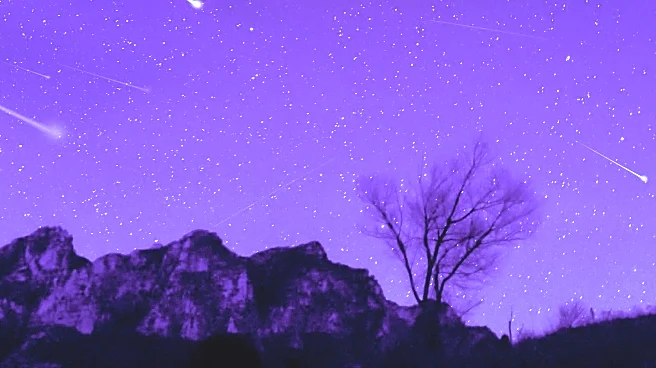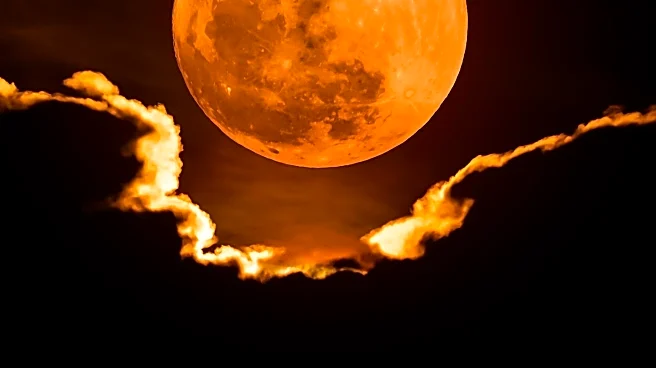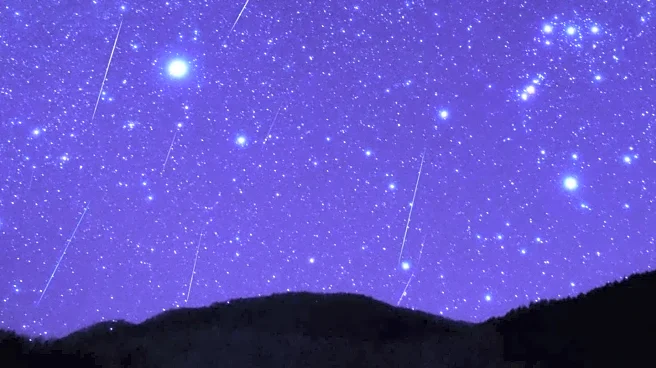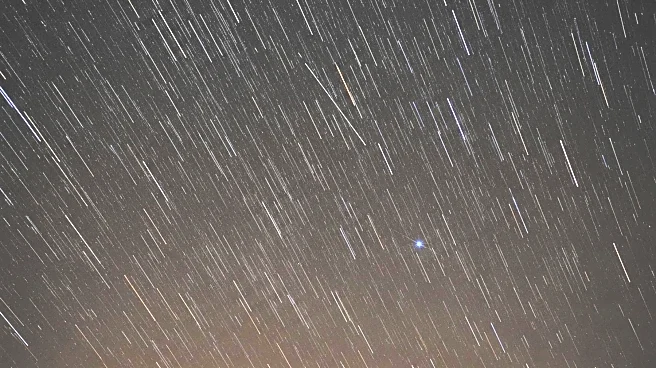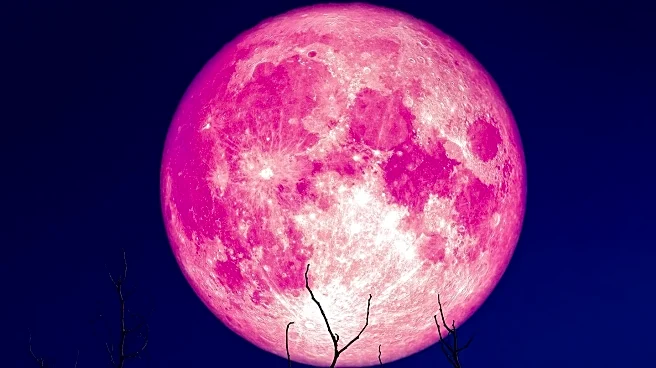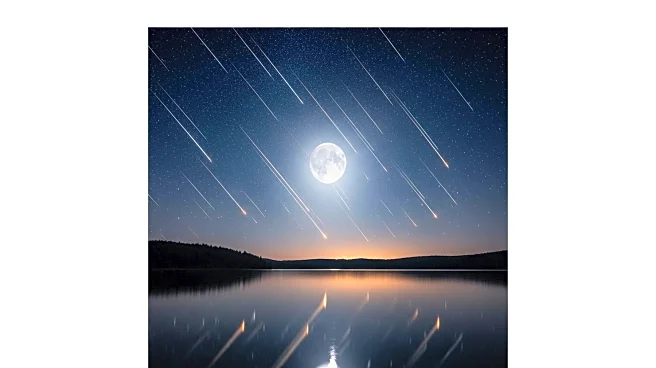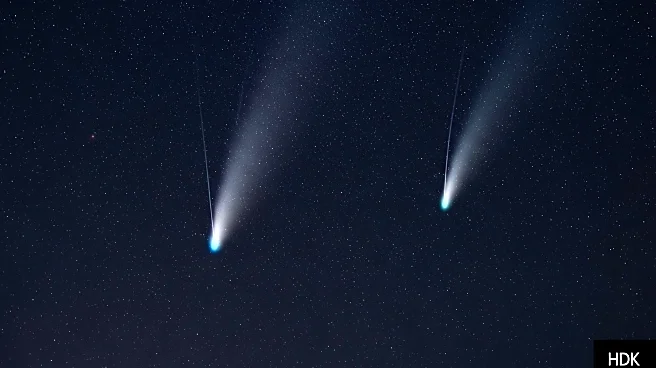What's Happening?
The Delta Aurigid meteor shower is set to peak tonight, offering a rare opportunity for stargazers to witness swift shooting stars. This annual event occurs as Earth passes through a debris trail left by an unknown comet. The shower is active from October 10 to October 18, with the peak expected at 6 a.m. EDT on October 11. Under ideal conditions, observers might see up to two meteors per hour. However, this year, the visibility of the Delta Aurigids is challenged by a 66%-lit waning gibbous moon, which will rise alongside the constellation Auriga, where the meteors appear to originate. The moon's brightness may obscure fainter meteors, making it difficult for observers to spot them. Stargazers are advised to look during the predawn hours when the radiant is high overhead, away from city lights, and allow their eyes to adjust to the dark.
Why It's Important?
Meteor showers like the Delta Aurigids offer a unique opportunity for the public to engage with astronomy and appreciate the natural phenomena of the night sky. Despite the challenges posed by the moonlight, such events can inspire interest in space science and encourage educational activities related to astronomy. The visibility of meteor showers can also impact local tourism, as enthusiasts travel to areas with optimal viewing conditions. Additionally, these events highlight the ongoing study of celestial bodies and their interactions with Earth, contributing to scientific understanding of cometary debris and its effects on our planet.
What's Next?
Following the Delta Aurigids, stargazers can look forward to the Orionid meteor shower later in the month, which may offer better viewing conditions. Observers are encouraged to use this event as a practice run for capturing meteor showers, utilizing guides and equipment recommendations for astrophotography. As the moon wanes further, visibility conditions for upcoming showers may improve, providing more opportunities for enthusiasts to witness these celestial events.
Beyond the Headlines
Meteor showers like the Delta Aurigids serve as a reminder of the vastness and complexity of our solar system. The particles that create these showers have been traveling through space since the formation of the solar system over 4 billion years ago. This perspective can foster a deeper appreciation for the history and dynamics of celestial bodies, as well as the ongoing exploration and study of space.


